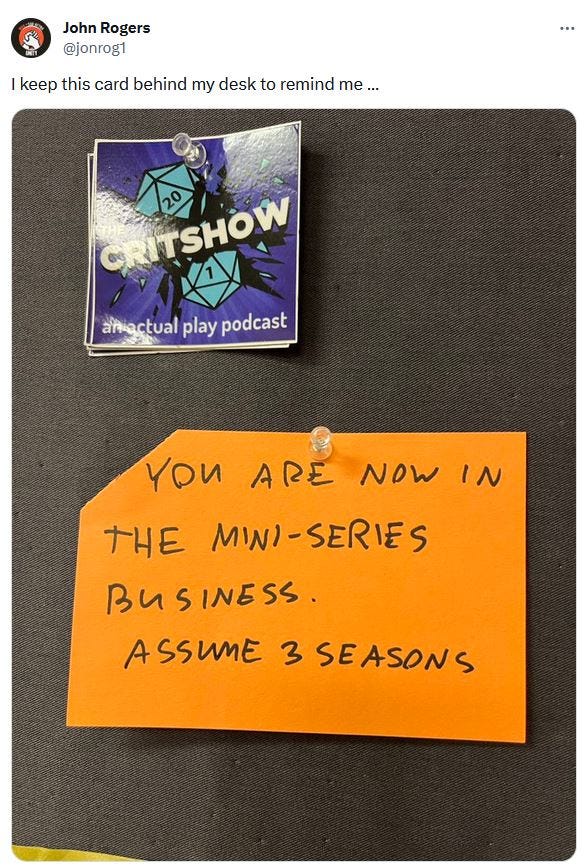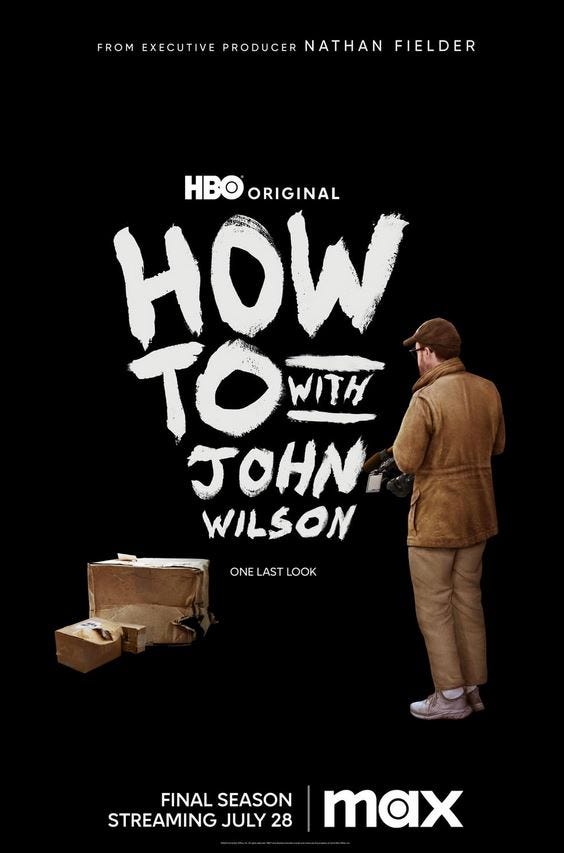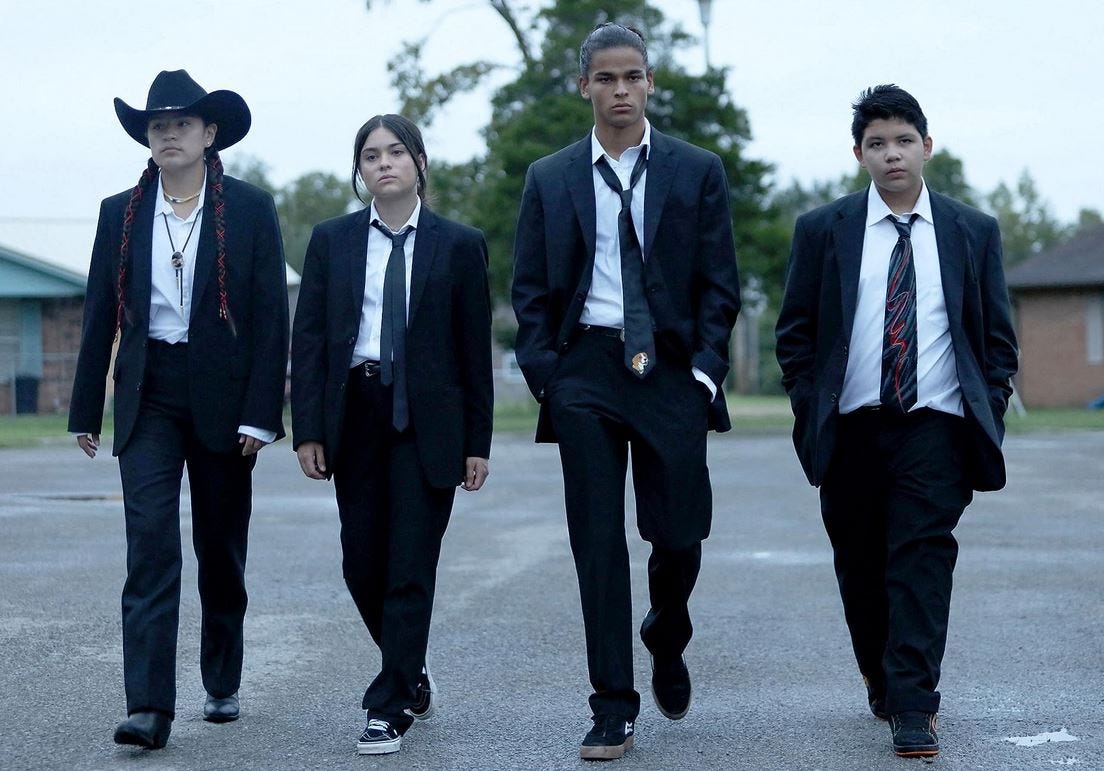C&C 19: Three and Out
Two of the best shows on TV leave while they’re hot
Earlier this month, screenwriter John Rogers posted this tweet.
The sentiment was prompted by the announcement that the iCarly revival on Paramount+ had been cancelled after three seasons. I have no idea if that was truly cause for mourning—I never saw the original iCarly, much less the reboot—but three seasons does seem to be best any TV series can expect.
Plenty of shows that I liked didn’t even make it that far. People of Earth (TBS, 2016-17), a sitcom about alien abductees, ended on a cliffhanger, then had its already-greenlit-and-scripted third season scrapped. (Creator David Jenkins bounced back with Our Flag Means Death, now entering its critical year two.) Don’t get me started on Lodge 49 (AMC, 2018-19), which left me with twenty glorious episodes and so many unanswered questions.
This year, I have to bid adieu to two favorite shows, exiting after three seasons not because they were cancelled but due to the creators feeling it’s time. I could lobby for each series to continue—who are you to deny me those meandering middle seasons that we complain about yet watch anyway?—but instead I’ll celebrate that they’re going out on their own terms.
I laughed when Rosemarie told me that Hunter Harris called How To with John Wilson (HBO) “every boyfriend’s favorite show.” It’s as apt a description as you’ll find for a series that defies categorization. Wilson, a Queens-born documentary filmmaker who is never without a camera, begins with a straightforward premise (“How To Appreciate Wine”) which he then investigates in amiably askew fashion. No episode ends up where you think it will, because of Wilson’s unforced if awkward openness and his willingness to engage people without judgment. I loved a moment in season three’s “How To Watch Birds” when a nature guide advised those assembled to say “Wow” no matter what wildlife they encountered, considering that the signature sound of How To is Wilson’s soft, heartfelt utterance of that word on a regular basis.
The first season was fun, ending with unexpected emotional impact as Wilson’s own life intruded on the story. That informed the show going forward; as he told the New York Times, “So many people on the show expose themselves to me and give me such honest interviews that I feel like I need to at least match them, if not go a step further sometimes.” I frequently think about him recounting his collegiate dalliance with the world of a cappella singing groups, and the shocking turn that it took.
The final season begins with Wilson locking himself in one of New York City’s few self-cleaning toilets to film the technology in action; it’s Jackass journalism at its finest. The shows only improve from there. The penultimate episode, the one nominally about birdwatching, affords Wilson the chance to interrogate the honesty of his own images and storytelling. It’s a not-entirely-successful but fascinating experiment, made more compelling by my watching it amidst the fallout from the New Yorker’s investigation into the “emotional truths” in the stand-up comedy of Hasan Minhaj. (Minhaj recently responded to that story. I’ll say this on the subject: the New Yorker feature raised some valid points but I take issue with its premise, and Minhaj made an annoying Celebrity Jeopardy! contestant.) The series finale, “How To Track Your Package,” culminates in a left-field revelation so staggering that even Wilson, as always off-camera, is stunned. But the high point of the season is “How To Watch the Game.” It’s one of the finest half-hours of television I’ve seen, with an ending I continue to think about months later. (That said, I would have appreciated a little more New York Mets-related content.) Wilson told Vulture that “I want people to feel a very complicated optimism. I think that’s kind of my default state a lot of the time.” All New Yorkers understand that state, and How To captures it brilliantly.
Wilson opted to end his show while he could still make its “style and imagery feel surprising.” Sterlin Harjo, who co-created Reservation Dogs (FX on Hulu) with Academy Award winner Taika Waititi, told the Hollywood Reporter that he abruptly realized during the writing of season three that the show had reached its logical conclusion: “it just started to happen faster because of the nature of how the stories are told.”
There’s a case to be made that Reservation Dogs was the best show on TV for much of its run, particularly in the early going. It focused on four Indigenous teenagers in rural Oklahoma, grieving for their friend Daniel a year after he was lost to suicide. They commit petty crimes, beef with a rival group, and make vague plans to light out for California as Daniel wanted them to do. (This would be an opportune time to say that Reservation Dogs is also hilarious.)
From the outset, this quartet of misfits was surrounded by memorable characters like laidback tribal cop Big (Zach McClarnon, simultaneously starring as Navajo lawman Joe Leaphorn in the Tony Hillerman adaptation Dark Winds) and especially William Knifeman (played by Dallas Goldtooth, one of the show’s writers), who died ignominiously at the Battle of Little Big Horn and now insists on serving as a spirit guide to one of the Rez Dogs.
Harjo and company took big swings in the third season. An episode about residential boarding schools was appropriately filmed like a horror movie. Another show set entirely in the 1970s allowed us to meet the elders we’d come to know when they were their generation’s version of the Rez Dogs, a tight-knit crew that had no clue what they were doing.
In her New Yorker review of the series, Inkoo Kang suggests that this broader canvas ultimately drew attention away from the core four characters. I’m tempted to agree only because I want to continue hanging with this bunch; I will rewatch episodes solely to hear the voice of Paulina Alexis, who plays Willie Jack. But Harjo accepted that as the price for his approach to the narrative: “You don’t fill it up with a lot of detail. We sort of pop in and out of this story. There’s a lot left to the imagination. We don’t fill in any gaps.” The finale does leave us in exactly the right place, flying in the face of the standard ending of most Western stories, “a person walking off alone into the sunset.”
What I’m Drinking
Every day’s a school day. Rosemarie and I were at one of our usual haunts, Rob Roy, having an in-depth conversation with our bartender Ewan about low/no ABV cocktails, Rosemarie’s libation of choice. Ewan evangelized on behalf of vermouth and soda, offering up a few suggestions including Punt e Mes.
I always keep a bottle of this Italian variety on hand because it’s an essential ingredient in my favorite cocktail, the Red Hook, created by Enzo Errico. Punt e Mes—the name means “point and a half” in Piedmontese—has a pronounced bitterness, its flavor lying somewhere between standard rosso vermouth and Campari. I mentioned to Ewan that its potency could take people by surprise.
Ewan then said that, during a blind taste test of Manhattans, Punt e Mes proved the runaway winner, a bulletin that almost knocked me off my barstool. I had shied away from using Punt e Mes in my own Manhattans because of its bite.
I soon remedied that, and the scales fell from my eyes. The sharpness of the vermouth, particularly when paired with a robust rye, transforms the cocktail. This one-off experiment is now my default choice.
The Manhattan (Vince’s version)
2 oz. rye
¾ oz. Punt e Mes
1 dash Angostura bitters
1 dash orange bitters
Stir. Strain. Garnish with a cherry.





Love How To. My friend was devastated that her visit to NYC was a week after John Wilson had a yard sale.
Nice post, Vince!